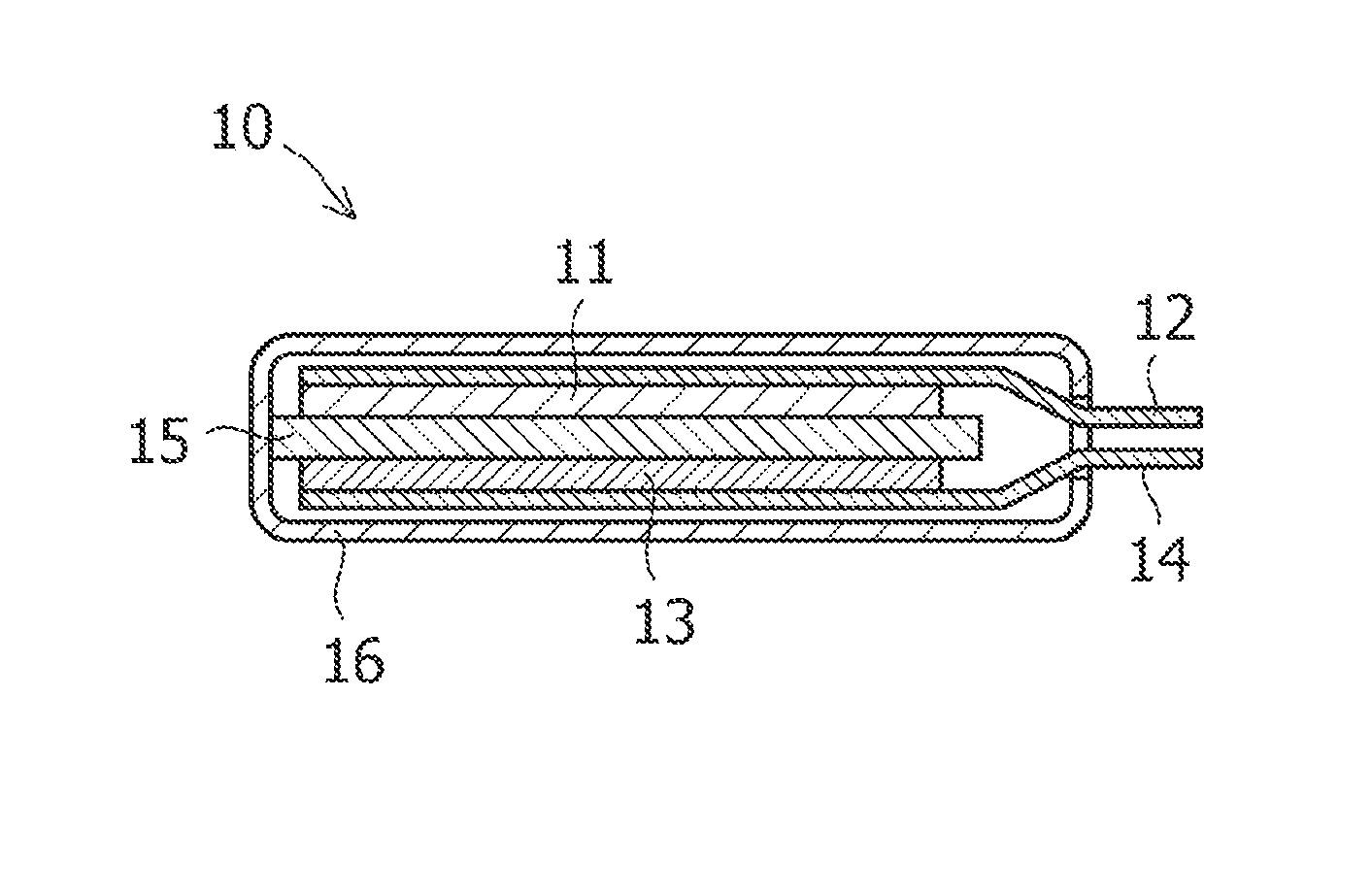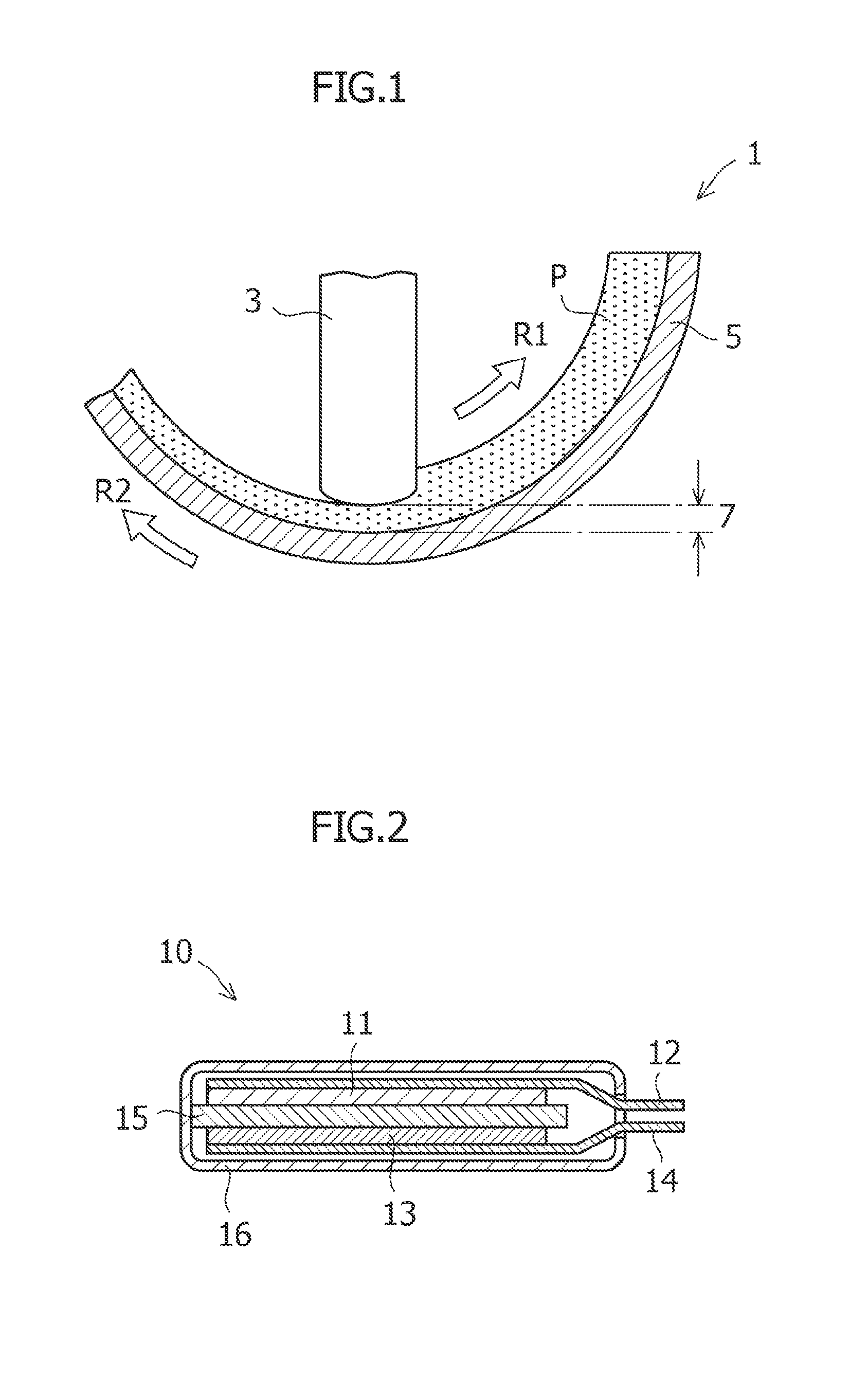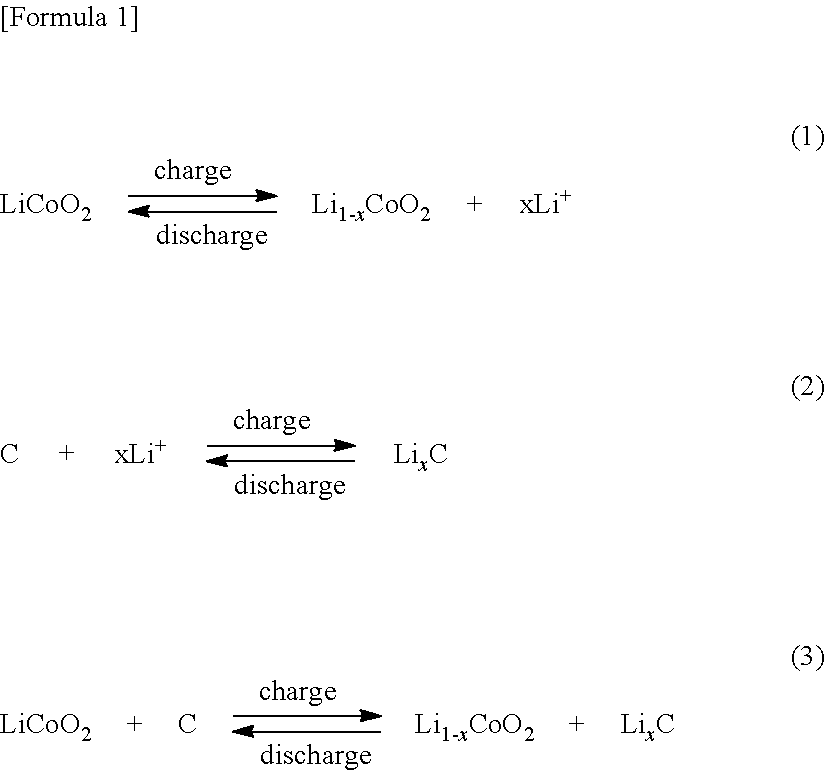Method of producing amorphous carbon material for the negative electrode of lithium ion secondary batter, and lithium ion secondary battery
a technology of secondary battery and amorphous carbon material, which is applied in the direction of cell components, transportation and packaging, coke ovens, etc., can solve the problems of reducing the capacity obtainable within a predetermined voltage range, no means of recovering the capacity, and inability in principle to make the charge and discharge efficiency identical, etc., to achieve a high degree of service life characteristics
- Summary
- Abstract
- Description
- Claims
- Application Information
AI Technical Summary
Benefits of technology
Problems solved by technology
Method used
Image
Examples
examples
[0101]The invention according to the present application will now be described in detail based on examples and comparative examples, with the understanding that these examples are in no way limitative on the invention.
1. Raw Coke Compositions And A Method For Producing Therefor
(1) Raw Coke Composition a
[0102]Atmospheric distillation residuum having the sulfur content of 3.1 mass % was hydrodesulfurized under the presence of a catalyst so that the hydrocracking ratio was 25% or less, thus obtaining hydrodesulfurization oil. Hydrodesulfurization conditions were the total pressure of 180 MPa, the hydrogen partial pressure of 160 MPa and the temperature of 380° C. Desulfurized vacuum light oil (having the content of sulfur of 500 mass-ppm and the density of 0.88 g / cm3 at 15° C.) was fluid catalytic cracked, thus obtaining fluid catalytic cracking residue oil. This fluid catalytic cracking residue oil was selective-extracted with dimethylformamide so as to be separated into an aromatic c...
PUM
| Property | Measurement | Unit |
|---|---|---|
| size | aaaaa | aaaaa |
| temperature | aaaaa | aaaaa |
| micro-strength | aaaaa | aaaaa |
Abstract
Description
Claims
Application Information
 Login to View More
Login to View More - R&D
- Intellectual Property
- Life Sciences
- Materials
- Tech Scout
- Unparalleled Data Quality
- Higher Quality Content
- 60% Fewer Hallucinations
Browse by: Latest US Patents, China's latest patents, Technical Efficacy Thesaurus, Application Domain, Technology Topic, Popular Technical Reports.
© 2025 PatSnap. All rights reserved.Legal|Privacy policy|Modern Slavery Act Transparency Statement|Sitemap|About US| Contact US: help@patsnap.com



